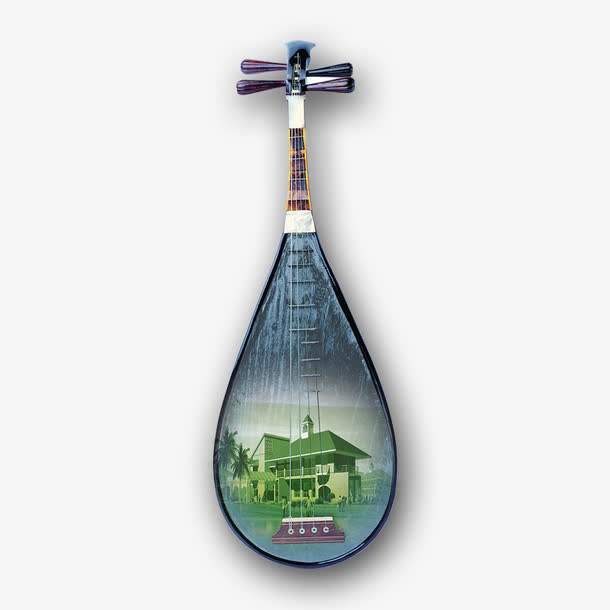Pipa scale training and mastery
The training of basic skills is of great significance and function to the pipa players. The scale training is an important part of the basic skills training content. On the multiple phonemes of the pipa (the phoneme and range are different, and different phonemes can produce the same pitch), it is not very difficult to compose several mode scales. If you want to practice these scales to achieve a skill that does not require the brain to command, it is very difficult. Summarizing years of teaching experience, I would like to share my views on the training of scales.

1. Scales should be familiar with the structure of various scales, find the position of each note on the piano, arrange the fingering reasonably, and remember the phoneme
The tone sequence is the pitch material that constitutes the scale, and practicing the tone sequence is almost the same as practicing the scale. Below I will use the D major scale as an example to illustrate.
Up: from double bass sol to double treble do.
Downstream: from the high-pitched do to the double-bass sol.
2. Finger distance and handle position
Feel and keep finger spacing and grip in mind during training. Part of the sound in the ascending sound column will be explained below.
The first four notes starting from the double bass sol: "sol la si do" are in phase. where "sol" is the fourth string open, "la" is the first finger, "si" is the second finger, and "do" (bass) is the third finger; the next bass "re mi"
The three tones of fa" are in the first position and also on the fourth string. The fingering is the same as the above-mentioned "la si do" three tones, using one, two and three fingers (ie food, middle and ring fingers), but the distance between the fingers is the same. It is different from the width of the handle. "la si do" is wider than the finger spacing and handle of "re mi fa".
"re mi fa" (bass), "la si (bass) do (middle)"; "re mi fa" (middle) These three groups of tones are all in the first position, but the number of strings is different. "re mi fa" (bass) is on the fourth string; "la si (bass) do (middle)" is on the second string; "re mi fa" (alt) is on the first string. Finger distance is the same.
"re mi fa" (middle tone); "re mi fa" (high tone) are on the first string and fingering is the same, but the position is different, "re mi fa" (middle tone) is in the first position; " re mi fa" (high pitched); in the third position. Therefore, the sense of finger distance is different. "la si (double bass) do (bass)" has the widest finger spacing in this sound sequence. And "la si (treble) do (treble)" has the narrowest finger spacing in this sound line. Each group of sounds in the middle has a different sense of finger spacing due to different positions. Feel it carefully every time you practice.
3. The finalization of technical movements such as fingering, number of strings, and positions
Still using the above line as an example. Such as "la si (double bass) do (bass)"; "re mi fa" (bass); the fingerings and strings of the two groups are the same.
First of all, after pressing the string with the first finger to play "la (double bass)", and pressing the string with the second finger to play "si", the first finger can be separated from the phase fret, or it can be gently placed in the original position, but not It can be shifted, that is, lift the finger vertically, but not too far away from the product. When playing "do (bass)", the second finger and the first finger require the same one.
Do not change the hand shape after the group of "la si (double bass) do (bass)" is played, because the next two groups of sounds "re mi fa" (bass) and "la si (double bass) do ( The fingering of "bass" is the same, and the hand shape is the same as "la si (double bass) do (bass)", but "re mi fa" (bass) is in the first position and needs to be changed. Pay attention to the forearm, shoulder and elbow, forearm, wrist and hand of the left arm when changing the handle, and at the same time change from one group of sounds to another group of sounds, and the movement is vertical downward, and the speed should be fast (including the right-hand picking movement, the right-hand and left-hand movements) When touching the strings at the same time, the fingers of the right index finger and the index finger of the right hand move at the same time as the end joint and the arm. When touching the strings, the fingers should be shallow and the speed should be fast. Method for each group of sounds after practice.
The method of playing the descending scale (or series) is the same as that of the ascending scale (or series). When changing the handle, the left arm's forearm, shoulder and elbow, forearm, wrist, and hand are changed from one set of notes to another at the same time, and the movement is vertical upward. .
Fourth, cultivate the ability of "subconscious"
During training, we must pay attention to the feeling that the left and right hands feel the same each time you play (including changing the handle of the left hand; the position and strength of pressing the string; passing the string; the action of the position, angle, and strength of the right hand touching the string), after repeated, many times Practice to acquire the ability to have habitual, controlled technical movements. That is, the gradual transition from "conscious" technical actions to "subconscious" technical actions.
Above I talked about a few steps of training scales. First practice a scale well, and then train all the scales one by one in this way.
 渝公网安备 50010702504639号
渝公网安备 50010702504639号